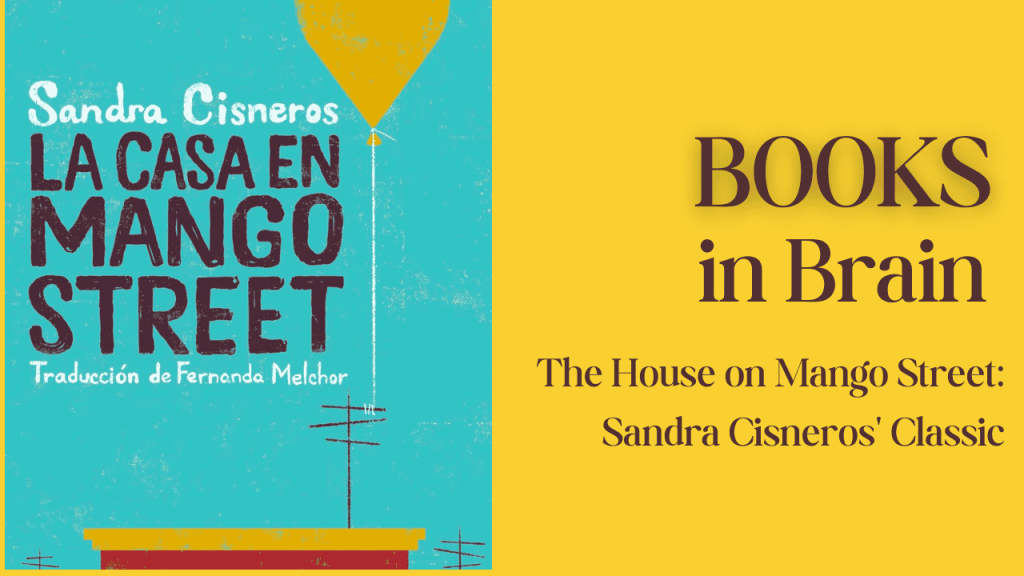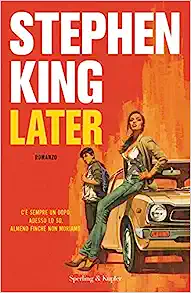In The House on Mango Street, Sandra Cisneros takes us on a captivating journey through the eyes of Esperanza Cordero. Sandra used poetic prose and striking vignettes. She weaves a rich tapestry of identity, culture, and resilience that will tug at your heartstrings and ignite your imagination.

From the struggles of growing up to the quest for self-discovery, this timeless classic will leave you eager to explore every page. It will moreover reflect on your own journey of belonging.
What is The House on Mango Street about?
The House on Mango Street is a poignant and deeply personal story about growing up, finding oneself, and navigating the complexities of identity. It’s about a young Latina girl learning that while she may want more from life, she also carries the stories and strength of the people around her as she moves forward.
It follows the life of Esperanza Cordero, growing up in a struggling neighborhood in Chicago. It told through a series of short vignettes. Each vignette tells a small but significant part of Esperanza Cordero’s life. The novel captures her experiences, dreams, and frustrations.
Esperanza lives on Mango Street, a place that feels both like a prison and a source of pride. Her family moves into the house with high hopes, but it’s far from the dream home they imagined. It’s small, rundown, and in a neglected neighborhood.
Yet, it’s this house that shapes Esperanza’s understanding of the world around her. Through her eyes, we see the stories of her neighbors, each of whom carries their own struggles, from domestic abuse to the barriers of culture.
What makes Esperanza stand out is her intense desire for something better. She longs to escape Mango Street, dreaming of a future where she owns a beautiful house of her own. But Mango Street has its grip on her, and the question arises: can she ever truly leave it behind?
The deeper you get into the story, the more you realize that the real heart of the novel is Esperanza’s internal journey. The journey is about one of self-discovery and empowerment. As she grows, she learns that Mango Street is not just a place she can physically leave. Its stories, the people, and the lessons they impart are part of her identity, no matter where she goes.
Though Esperanza yearns to break free, the novel leaves readers with a subtle twist: will she abandon her roots entirely, or will she return to help those who are still trapped by the confines of Mango Street?
The answer to this question is part of the novel’s lasting mystery and its emotional pull. To discover what Esperanza ultimately chooses, you’ll need to dive into the pages yourself.
Key Themes in The House on Mango Street
Esperanza’s journey toward self-discovery is one of the most prominent themes in the novel. There are some other notable themes in the writing.
Identity and Self-Discovery:
Throughout the book, she grapples with understanding who she is as both a young woman and as a Latina, while also trying to determine what she wants out of life. Living on Mango Street shapes her perspective, but she refuses to let her surroundings dictate her future. The internal conflict between staying connected to her roots and breaking free from them is a central part of her development.
One recurring motif in the novel is the significance of Esperanza’s name, which means “hope” in English. She reflects on her name, she desires to redefine herself and create her own destiny.
Gender Roles and Feminism:
Gender plays a crucial role in shaping the lives of many female characters in the novel. Women like Sally, Rafaela, and Marin are restricted by traditional gender roles and face oppression from the men in their lives. Esperanza witnesses their struggles and resolves not to fall into the same traps. She dreams of living a life free from the societal expectations placed on women in her community.
Sally’s story serves as a cautionary tale. While she seeks an escape from her circumstances through marriage, she soon finds herself trapped in an abusive relationship. Her fate exemplifies the cyclical nature of gender-based oppression.
Cultural Identity
The novel also explores the complexities of cultural identity, especially for Latinas living in the United States. Esperanza feels torn between her Mexican heritage and the broader American culture. This duality creates tension as she tries to honor her roots while also carving out her own future. The novel highlights the challenges of balancing these cultural identities and finding belonging in a world that often imposes limitations based on ethnicity.
Cisneros uses both English and Spanish throughout the novel to reflect the blending of cultures in Esperanza’s life. Language becomes a tool that connects her to her cultural background while also serving as a reminder of the difficulties she faces in navigating between two worlds.
Analysis of The House on Mango Street
The novel is written in short, lyrical vignettes, each one capturing a snapshot of Esperanza’s life. This unique structure allows the story to cover a lot of ground in a simple and powerful way. The language is straightforward but filled with vivid images and emotions, making it accessible while also deeply expressive. Each vignette serves as a small window into Esperanza’s world, giving readers a sense of her internal struggles and hopes.
Sandra Cisneros captures the voice of a young girl with authenticity, using simple but impactful prose. As Esperanza grows up, the tone of the book shifts—she begins with a sense of innocence but slowly becomes more aware of the hardships around her. The fragmented style of the vignettes mirrors the fragmented nature of Esperanza’s experiences, as she pieces together what it means to grow up and find her place in the world.
Symbolism in The House on Mango Street
There are some symbols in the book that actually mean something different.
- The House
The house on Mango Street symbolizes Esperanza’s dreams and aspirations. Throughout the novel, she is dissatisfied with the small, run-down house her family lives in. To Esperanza, owning a house represents freedom, independence, and self-worth. However, the house also represents her cultural roots and the limitations imposed on her by her environment.
- Shoes
Shoes are another significant symbol in the novel, representing femininity, sexuality, and maturity. For Esperanza, shoes are a way to express her budding womanhood. They also come with the realization that growing up as a girl in her neighborhood exposes her to danger and unwanted attention.
- Trees
Esperanza often refers to the trees on Mango Street as symbols of resilience and hidden strength. The trees, like the women in her community, are strong despite their harsh environment. This symbolism reflects Esperanza’s inner strength and her desire to grow beyond her surroundings.
Characters in The House on Mango Street
The House on Mango Street is composed of vignettes that offer glimpses into the lives of various characters living in a Latino neighborhood in Chicago. Through the eyes of the young protagonist, Esperanza Cordero, we meet a diverse group of neighbors, family members, and friends, each with their own stories. Here’s a detailed look at some of the key characters in the novel:
1. Esperanza Cordero
The novel’s narrator and central character, Esperanza is a young girl who dreams of escaping her impoverished life on Mango Street. She’s introspective, creative, and full of ambition, with a strong desire to find a place where she truly belongs. Throughout the novel, Esperanza struggles with feelings of isolation and the pressures of growing up in a community that often restricts women’s independence.
2. Nenny Cordero
Esperanza’s younger sister, Nenny (short for Magdalena), is depicted as childish and immature, which often frustrates Esperanza. Though the two share a close bond, Esperanza feels responsible for her and often separates her own identity from Nenny’s. Nenny’s imagination sometimes rivals Esperanza’s, and she shows a strong connection to their family heritage, but her youthfulness serves as a reminder of Esperanza’s need to mature.
3. Sally
Sally is a beautiful but troubled girl who captivates Esperanza with her glamorous looks and rebellious attitude. However, behind her beauty lies a life of abuse at home. Sally’s father is extremely strict and violent, forbidding her from interacting with boys. In the end, Sally marries a man at a young age to escape her home life, but her marriage turns out to be just as restrictive as her home. Esperanza initially idolizes Sally but becomes disillusioned by how Sally’s choices conflict with her own dreams of independence.
4. Marin
Marin is an older, attractive girl who lives with her cousins on Mango Street. She is often seen as worldly and street-smart, teaching Esperanza and the younger girls about boys, beauty, and life. Marin has big dreams of being swept away by a rich man or moving back to Puerto Rico to start a new life, but her dreams seem increasingly out of reach. She represents both the allure and the limitations of the traditional roles women are expected to play.
5. Rachel and Lucy
These two sisters, who become Esperanza’s closest friends on Mango Street, are known for their playful nature and close sibling bond. They come from Texas and are poor, like Esperanza. Rachel is more outspoken and confident, while Lucy, the older sister, tends to be more grounded. Together, they bring joy and companionship to Esperanza’s life, offering her a sense of community.
6. Alicia
Alicia is one of the few female characters in the novel who actively seeks to improve her life through education. After her mother dies, Alicia is burdened with household responsibilities, but she attends university and works hard to escape her circumstances. She serves as an important role model for Esperanza, demonstrating that women can break free from the constraints placed on them by society, even though Alicia’s path is difficult and lonely.
7. Rafaela
Rafaela is a young woman who is locked indoors by her controlling husband because he fears she will run away or flirt with other men. She spends her days longing for freedom, sending money down in a basket from her window to buy sweet drinks like coconut or papaya juice. Her situation symbolizes the limitations placed on women in the community and their desire for escape.
8. Mamacita
Mamacita is an overweight woman who moves to Mango Street from another country but refuses to learn English or assimilate into American culture. She remains isolated in her apartment, homesick for her native country, longing to return but unable to do so. Her refusal to adapt to her new environment reflects the challenges immigrants face in adjusting to a new life, and her relationship with her son—who embraces English and American culture—shows the generational divide that often accompanies immigration.
9. Minerva
Minerva is a young woman, slightly older than Esperanza, who already has two children and an abusive husband. She writes poetry as a way to cope with her pain but remains stuck in a cycle of domestic violence, unable to leave her husband despite her constant efforts to do so. Minerva’s story is a stark reminder of the limited options available to women on Mango Street and the ways in which abuse can trap them.
10. Esperanza’s Mother
Esperanza’s mother is a strong but somewhat regretful figure. Though she is caring and capable, she often speaks of the opportunities she missed out on because she dropped out of school. She encourages Esperanza to pursue her education and not to be bound by the limitations of their neighborhood. Esperanza looks up to her mother but is also determined not to make the same mistakes she did.
11. Esperanza’s Father
Esperanza’s father is a hardworking man who emigrated from Mexico to provide a better life for his family. Though he is mostly absent due to his work, he is a source of stability and represents the traditional Latino father figure—stoic, responsible, and concerned about providing for his family.
12. The Vargas Kids
The Vargas family, particularly the children, are depicted as out of control and neglected by their mother, who is overwhelmed by the death of their father. The neighborhood has given up on disciplining them, and they symbolize the chaos and lack of direction that can occur when families fall apart under the weight of poverty and loss.
13. Aunt Lupe
Aunt Lupe was once a beautiful swimmer but is now bedridden and ill. She encourages Esperanza to keep writing, telling her that writing will keep her free. Though Esperanza and her friends mock Aunt Lupe’s condition behind her back, her death leaves Esperanza feeling guilty and more aware of the consequences of her actions.
14. Elena (Esperanza’s Great-Grandmother)
Esperanza is named after her great-grandmother, a woman who was strong-willed but ultimately forced into a life of submission after being dragged into marriage. This legacy haunts Esperanza, and she is determined not to follow the same path, vowing to break free from the expectations placed on women in her family and culture.
Conclusion
The House on Mango Street remains a beloved and influential novel because of its timeless exploration of identity, culture, and gender. Through the poetic and fragmented stories, Sandra Cisneros sheds light on the universal human desire for freedom and self-worth.
Even decades after its publication, The Notebook continues to resonate with readers of all backgrounds. It has established itself as a modern classic in romantic literature.


